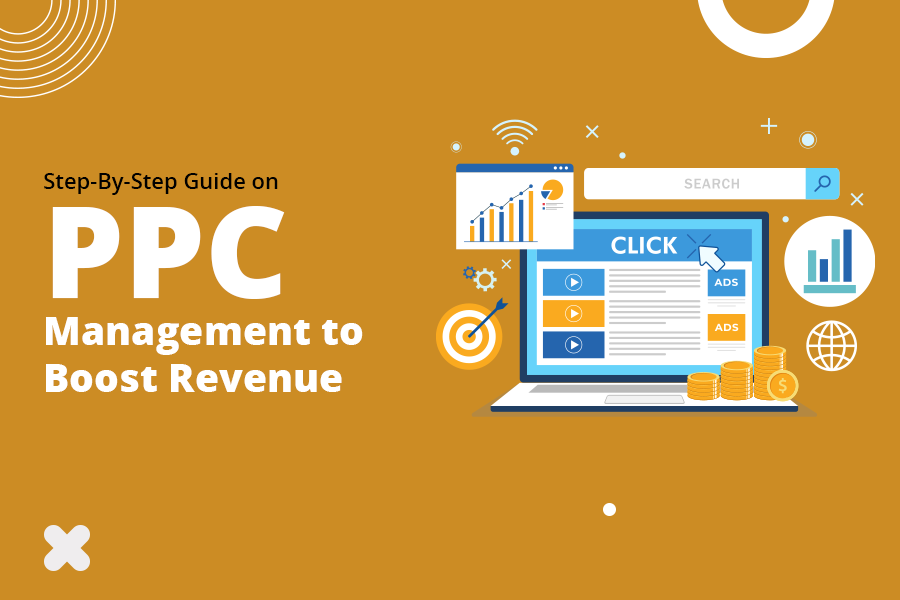Maximizing Your Online Profits 2025: Effective CPM and PPC Campaign Strategies
In the world of online advertising, two of the most popular methods for driving traffic and revenue are Cost Per Thousand Impressions (CPM) and Pay Per Click (PPC). These strategies, while both effective, serve different purposes and require different approaches to optimize. Understanding how to make the most of each method can significantly increase your online profits. This guide will explore effective strategies for both CPM and PPC campaigns, offering insights into how you can maximize your returns.
Understanding CPM: What It Is and How It Works
Cost Per Thousand Impressions (CPM) is an online advertising model where advertisers pay for every thousand times their ad is displayed, regardless of whether or not a user interacts with it. This model is commonly used in display ads, banner ads, and video ads across various platforms, including social media sites, blogs, and content websites. CPM is ideal for advertisers who want to increase brand visibility and awareness.
The way CPM works is straightforward: advertisers set a budget and bid for ad placements on websites or platforms. The more competitive the space, the higher the bid required. However, since CPM is focused on impressions rather than engagement, it is best suited for campaigns aiming to reach a large audience. Maximizing your CPM strategy means targeting the right audience and ensuring your ads are placed in high-traffic areas where they have the chance to be seen by many people.
Understanding PPC: What It Is and How It Works
Pay Per Click (PPC) is another powerful online advertising model, but it works differently than CPM. In PPC, advertisers only pay when a user clicks on their ad. This method is often used in search engine ads, like Google Ads, and is a great way for advertisers to drive direct traffic to their websites. Unlike CPM, PPC focuses on user action rather than simple exposure.
The beauty of PPC lies in its measurable nature. Since you only pay when a user clicks on your ad, you can track the effectiveness of your campaigns and adjust accordingly. By targeting specific keywords and demographics, you can optimize your PPC campaigns to drive relevant traffic. Understanding your audience’s intent is crucial, as it ensures that the clicks you’re paying for will likely lead to conversions, making PPC a more performance-driven strategy compared to CPM.
CPM vs. PPC: Which One Is Right for Your Business?
Choosing between CPM and PPC largely depends on your business goals. If your aim is to boost brand awareness and reach a large number of people, CPM might be the better choice. However, if your goal is to drive conversions, sales, or leads, PPC will likely deliver more targeted results. Some businesses find that a combination of both models works best.
For example, you could use CPM to build brand recognition and then use PPC to target the audience that has shown interest in your products or services. Both strategies are valuable, but understanding which one aligns better with your objectives will help you allocate your budget more effectively. Evaluating your business’s needs and the nature of your target market will help you make an informed decision.
Targeting the Right Audience for CPM Campaigns
One of the most important aspects of a successful CPM campaign is targeting the right audience. Unlike PPC, where you’re paying for clicks, CPM focuses on impressions, so it’s crucial that your ads are seen by the right people. Start by defining your ideal customer profile and using demographic targeting tools to focus on the most relevant audience.
Consider factors like age, gender, location, and interests when choosing where to place your ads. Social media platforms, for example, offer advanced targeting options that allow you to narrow down your audience based on their behaviors and interests. Additionally, leveraging remarketing strategies can help you target people who have previously interacted with your brand, ensuring your ads are displayed to users who are already familiar with your business.
Targeting the Right Audience for PPC Campaigns
In a PPC campaign, targeting the right audience is equally important, but the approach is different. Since PPC focuses on user intent, understanding what keywords your audience is searching for is key. Start by researching the keywords most relevant to your business and industry. Tools like Google Keyword Planner can help you identify high-converting keywords that will drive targeted traffic.
In addition to keyword targeting, consider audience targeting options, such as location, device type, time of day, and demographics. This enables you to fine-tune your ads and deliver them to users who are most likely to click. By aligning your ads with specific user intent, you can improve your click-through rates (CTR) and ultimately, your return on investment (ROI).
Optimizing Your CPM Campaigns for Better Performance
Optimizing a CPM campaign is all about improving the visibility and reach of your ads. One key factor in this is selecting the right ad placements. If you’re advertising on a website, ensure it has high traffic and aligns with your target audience’s interests. Tools like Google Display Network and Facebook Ads Manager offer detailed insights into where your ads are being shown, allowing you to optimize placements accordingly.
You should also focus on creating compelling, eye-catching ads that stand out. Since you’re paying for impressions, it’s important that your ad grabs the attention of users. Experiment with different ad formats, such as static images, videos, or interactive ads, to see which ones drive the most engagement. Regularly analyze your campaigns to identify underperforming ads and make necessary adjustments to improve overall performance.
Optimizing Your PPC Campaigns for Better Results
For PPC campaigns, optimization is all about improving your Quality Score and maximizing your ROI. One of the best ways to improve your Quality Score is by focusing on ad relevance. Make sure your ad copy matches the keywords you’re bidding on and that your landing pages are highly relevant to the user’s query. The more aligned your ad is with what the user is searching for, the better your Quality Score will be.
Additionally, continually monitor and adjust your bids to ensure you’re not overspending on underperforming keywords. A/B testing different ad variations and landing pages can also help you identify what resonates best with your audience. By making data-driven decisions and adjusting your approach, you can ensure your PPC campaigns are as effective as possible.
Understanding Bidding Strategies for CPM Campaigns
Bidding strategies in CPM campaigns are crucial to maximizing your ad placements. The most common bidding strategies include manual bidding, automatic bidding, and target CPM. Manual bidding allows you to set your bid amount, giving you full control, while automatic bidding adjusts your bid based on your goals and budget. Target CPM lets you set a desired cost per thousand impressions, and the platform will try to deliver your ads within that target.
It’s important to experiment with different bidding strategies to see which one works best for your business. Consider factors such as your budget, campaign goals, and the competitiveness of the advertising space when choosing your bidding strategy. Regularly reviewing your bids and adjusting them based on performance will help you optimize your CPM campaigns and maximize your online profits.
Understanding Bidding Strategies for PPC Campaigns
Bidding strategies for PPC campaigns are equally important to your success. The most common bidding options include cost-per-click (CPC), enhanced cost-per-click (ECPC), and target CPA (cost per acquisition). CPC is the most straightforward, where you pay a set amount for each click. ECPC adjusts your bid based on the likelihood of conversion, while target CPA allows you to set a desired cost per conversion.
Choosing the right bidding strategy depends on your campaign goals. If you’re focused on driving traffic to your website, CPC may be the best option. However, if you’re looking to drive conversions, target CPA might yield better results. Continuously monitor your bids and adjust them as necessary to maximize your ROI.
Measuring the Success of Your CPM Campaigns
Measuring the success of your CPM campaigns involves tracking key metrics like impressions, reach, and frequency. Impressions tell you how many times your ad has been shown, while reach measures how many unique users have seen your ad. Frequency refers to how often your ad is shown to the same user. These metrics help you understand the overall performance of your campaign.
To gauge the effectiveness of your CPM campaign, also look at brand awareness and engagement levels. While CPM doesn’t focus on clicks or conversions, increased visibility and engagement can indicate that your ad is resonating with your target audience. By reviewing these metrics regularly, you can make informed adjustments to your strategy and improve future campaign performance.
Measuring the Success of Your PPC Campaigns
For PPC campaigns, measuring success is more straightforward, as you can track direct metrics like click-through rate (CTR), conversion rate, and cost per conversion. CTR tells you how many users are clicking on your ad relative to how many times it is shown, while conversion rate measures how many clicks lead to desired actions, such as making a purchase or signing up for a newsletter.
In addition to these metrics, it’s essential to calculate your return on investment (ROI). Compare the revenue generated by the campaign with the cost of running the ads to determine whether the campaign was profitable. Regularly evaluating these key metrics will help you identify areas of improvement and optimize your campaigns for better results.
Testing and Experimenting: The Key to Effective Campaigns
No matter which strategy you’re using, testing and experimentation are vital to improving your results. For both CPM and PPC campaigns, A/B testing can help you determine which ad formats, placements, and messaging work best for your audience. By testing different elements of your campaigns, you can identify what resonates with users and adjust your approach accordingly.
8For CPM campaigns, test different ad designs and placements to see which ones result in the highest visibility and engagement. For PPC, test different keywords, ad copy, and landing pages to identify what drives the most conversions. The key is to never stop testing, as constant experimentation will lead to continuous improvement and increased profits.
Leveraging Automation in CPM and PPC Campaigns
Automation is a powerful tool that can help streamline both CPM and PPC campaigns. For CPM campaigns, tools like Google Ads and Facebook Ads Manager allow you to automate ad placements and optimize bidding strategies. Automated bidding ensures your ads are placed in the best spots without you having to manually adjust bids.
For PPC campaigns, automation can help you optimize your bids, schedule ads, and even create dynamic ads based on user behavior. Automated rules can trigger actions like pausing underperforming ads or increasing bids on high-converting keywords. Leveraging automation frees up time and ensures your campaigns are running smoothly without constant manual intervention.
Common Mistakes to Avoid in CPM and PPC Campaigns
Both CPM and PPC campaigns can be highly effective, but there are common mistakes that advertisers often make. One of the biggest mistakes in CPM campaigns is targeting the wrong audience. Without proper targeting, your ads may be seen by people who aren’t interested in your product or service, leading to wasted impressions. Similarly, in PPC, a common mistake is bidding on overly broad or irrelevant keywords, which can lead to low-quality traffic.
Another mistake to avoid in both types of campaigns is not testing enough. Whether it’s ad copy, keywords, or bidding strategies, failing to experiment and adjust based on performance can lead to suboptimal results. By focusing on targeted strategies, continuous testing, and data-driven decisions, you can avoid these common pitfalls and run more successful campaigns.
Conclusion: Maximizing Your Online Profits
Maximizing your online profits through effective CPM and PPC campaigns requires a clear understanding of both models and how to leverage them for your business goals. CPM is great for building brand awareness and reaching a large audience, while PPC is ideal for driving targeted traffic and conversions. By optimizing your campaigns, targeting the right audience, testing different strategies, and measuring success, you can boost your online profits and see better results from your advertising efforts. Whether you choose one model or combine both, consistent effort and smart strategies will lead to long-term success.




